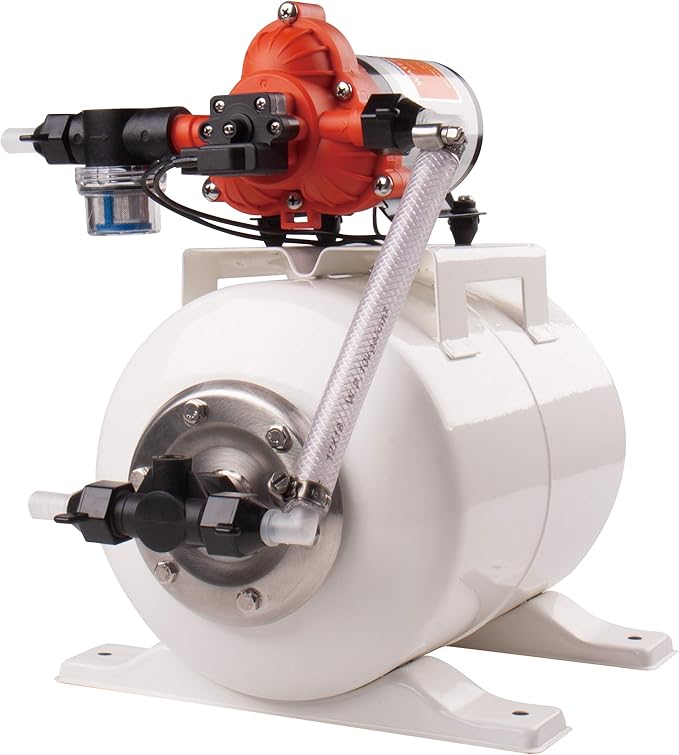What is a Hydraulic Accumulator? Importance of Hydraulic Accumulators
Contents
- 1 What is a Hydraulic Accumulator?
- 2 Working Principle of Hydraulic Accumulators
- 3 Types of Hydraulic Accumulators
- 4 Applications of Hydraulic Accumulators
- 5 Design Considerations and Sizing of Hydraulic Accumulators
- 6 Hydraulic Accumulator Selection Criteria
- 7 Maintenance, Troubleshooting, and Safety of Hydraulic Accumulators
- 8 Conclusion

Contents1 I. What is a Rupture Disc?2 II. How Does a Rupture Disc Work?3 III. Types of Rupture Discs3.1 1. Forward-Acting Rupture Discs3.2 2. Reverse Buckling Rupture Discs3.3 3. Composite Rupture Discs3.4 4. Graphite Rupture Discs3.5 5. Scored vs. Non-Scored Discs4 IV. Key Applications of Rupture Discs4.0.1 1. Oil and Gas Industry4.0.2 2. Chemical and […]

Contents1 I. What is a Pressure Relief Valve?1.1 Key Functions of a Pressure Relief Valve:2 II. How a Pressure Relief Valve Works2.1 Basic Operating Principle2.2 Key Components2.3 Opening and Closing Behavior2.4 Back Pressure Considerations2.5 Set Pressure vs Relieving Pressure2.6 Importance of Proper Operation3 III. Types of Pressure Relief Valves3.1 1. Spring-Loaded Pressure Relief Valves3.2 2. […]

Contents1 I. What Is a Dosing Pump?1.1 Key Characteristics of Dosing Pumps:2 II. Components of a Dosing Pump System2.1 1. Pump Head2.2 2. Diaphragm or Piston2.3 3. Drive Mechanism2.4 4. Electric Motor or Solenoid2.5 5. Suction Line (Inlet Tubing)2.6 6. Discharge Line (Outlet Tubing)2.7 7. Injection Valve2.8 8. Foot Valve and Strainer2.9 9. Pulsation Dampener2.10 […]

Contents1 I. What is Galvanized Piping?1.0.1 Materials Used in Galvanized Piping1.0.2 The Galvanization Process2 II. Galvanized Piping Specifications2.0.1 1. Material Specifications2.0.2 2. Zinc Coating Requirements2.0.3 3. Dimensions and Tolerances2.0.4 4. Physical and Mechanical Properties2.0.5 5. Testing and Quality Assurance2.0.6 6. Compliance and Certifications2.0.7 7. End Finishes and Thread Specifications3 III. Galvanized Piping Dimension Size Chart3.1 […]

Contents1 I. How Hydraulic Hoses Work2 II. Types of Hydraulic Hoses3 III. Key Components of Hydraulic Hoses3.1 1. Inner Tube3.2 2. Reinforcement Layer3.3 3. Outer Cover3.4 4. End Fittings3.5 5. Protective Layers (Optional)4 IV. Selection Criteria for Hydraulic Hoses4.1 1. Pressure Rating4.2 2. Temperature Tolerance4.3 3. Fluid Compatibility4.4 4. Size and Length4.5 5. Flexibility and […]

Contents1 I. What is a Flaring Tool?2 II. Types of Flares and Applications2.0.1 1. Single Flare2.0.2 2. Double Flare (Inverted Flare)2.0.3 3. Bubble Flare (ISO Flare)2.1 Choosing the Right Flare for Your Application3 III. Types of Flaring Tools3.0.1 1. Manual Flaring Tools3.0.2 2. Ratchet Flaring Tools3.0.3 3. Hydraulic Flaring Tools3.0.4 4. Electric or Power-Assisted Flaring […]

Contents1 I. What are gas tanks ?1.1 Key Features of Gas Tanks:1.2 How Gas Tanks Work:2 II. Types of gas tanks2.1 1. Automotive Fuel Tanks2.2 2. Compressed Gas Cylinders2.3 3. Propane and Liquefied Petroleum Gas (LPG) Tanks2.4 4. Cryogenic Gas Tanks2.5 5. Natural Gas Vehicle (NGV) Tanks2.6 6. Industrial Bulk Storage Tanks2.7 7. Portable Camping […]

Contents1 I. What is a Submersible Water Pump ?1.1 Key Characteristics1.2 Advantages2 II. How Submersible Water Pumps Work ?2.1 1. Basic Working Principle2.2 2. The Role of the Motor and Impeller2.3 3. Waterproof Casing and Sealing2.4 4. Pushing vs. Pulling Mechanism2.5 5. Integrated Check Valve (Optional)2.6 6. Power Source and Control Mechanisms3 III. Types of […]

Contents1 I. What Are Pipe Connector Fittings?2 II. Types of Pipe Connector Fittings2.0.1 1. Coupling2.0.2 2. Elbow2.0.3 3. Tee2.0.4 4. Cross2.0.5 5. Reducer2.0.6 6. Adapter2.0.7 7. Union2.0.8 8. Caps and Plugs2.0.9 9. Flange2.0.10 10. Nipples2.1 Other Types of Pipe Connector Fittings3 III. Materials Used in Pipe Connector Fittings3.0.1 1. Stainless Steel3.0.2 2. Brass3.0.3 3. PVC […]

Contents1 I. What Are Polyurethane Pipes?2 II. Types of Polyurethane Pipes2.1 1. Standard Polyurethane Pipes2.2 2. Reinforced Polyurethane Pipes2.3 3. Abrasion-Resistant Polyurethane Pipes2.4 4. Anti-Static Polyurethane Pipes2.5 5. FDA-Approved Polyurethane Pipes2.6 6. High-Temperature Polyurethane Pipes2.7 7. UV-Resistant Polyurethane Pipes3 III. What is polyurethane pipe used for?3.1 1. Industrial Applications3.2 2. Agricultural and Irrigation Systems3.3 3. […]


 Automation System
Automation System  Energy Engineeing
Energy Engineeing  Instrumentation System
Instrumentation System  Mechanical Engineeing
Mechanical Engineeing  Piping Technologies
Piping Technologies  Transportations
Transportations  Manufacturing
Manufacturing  Training Material
Training Material 






